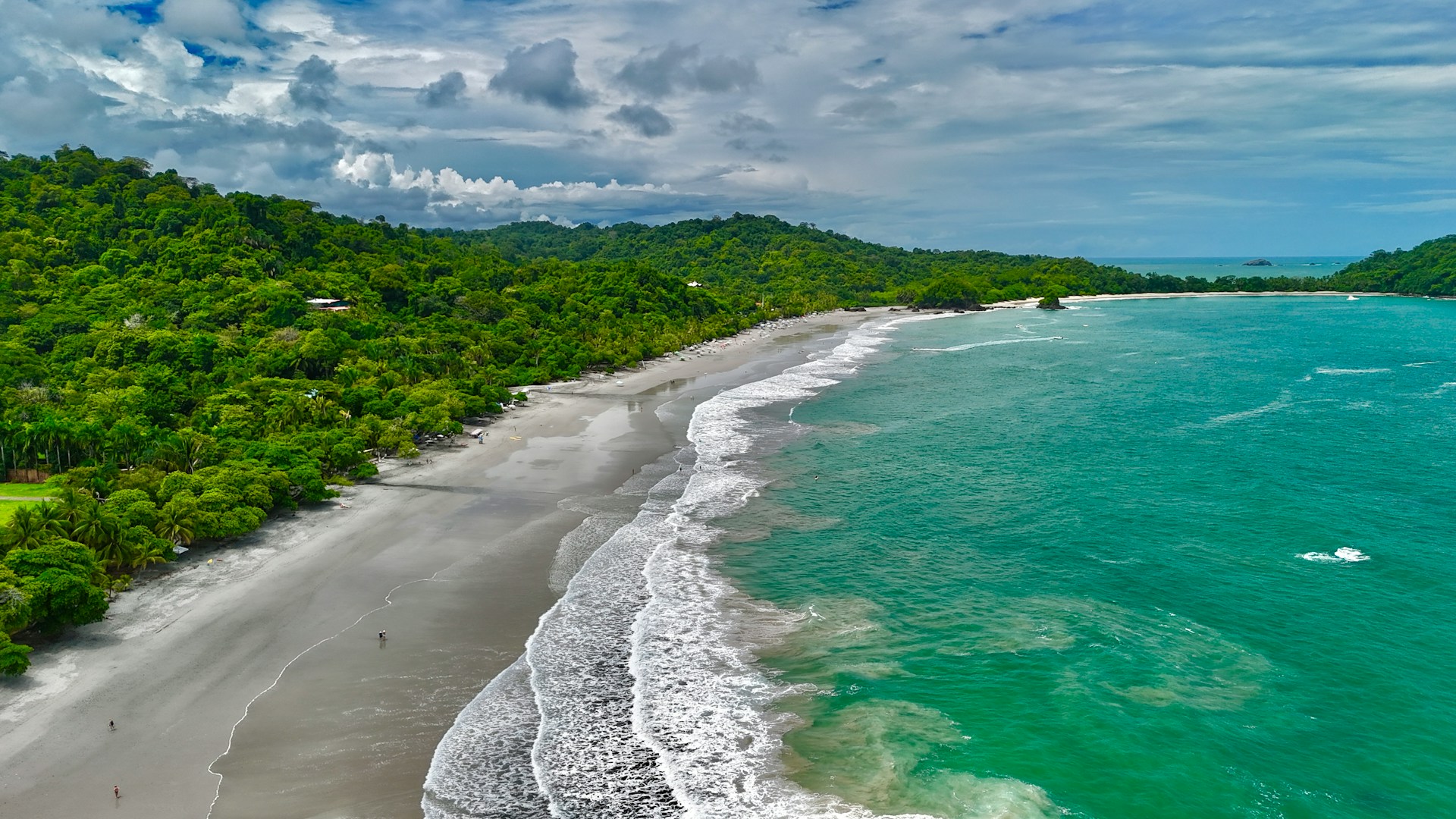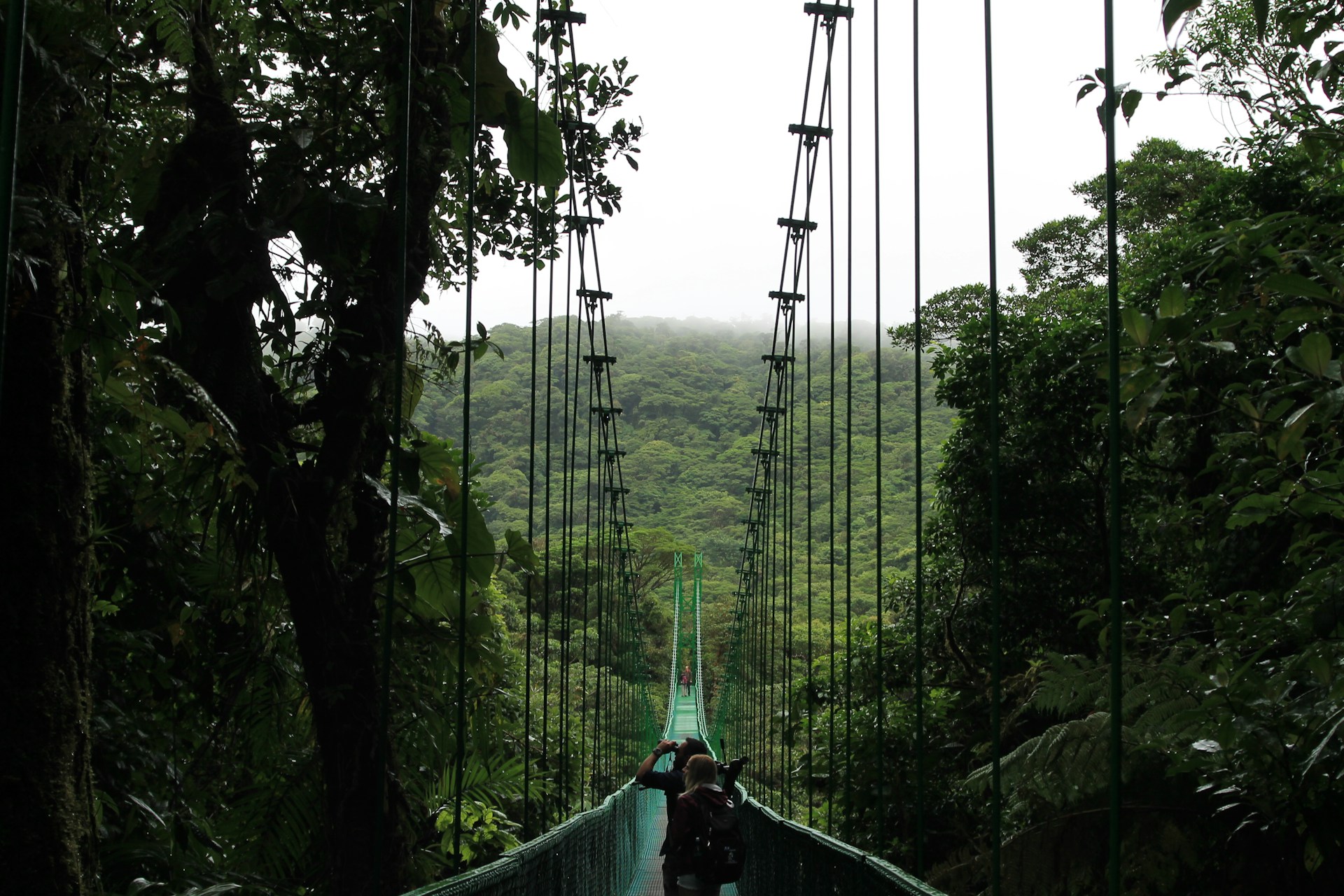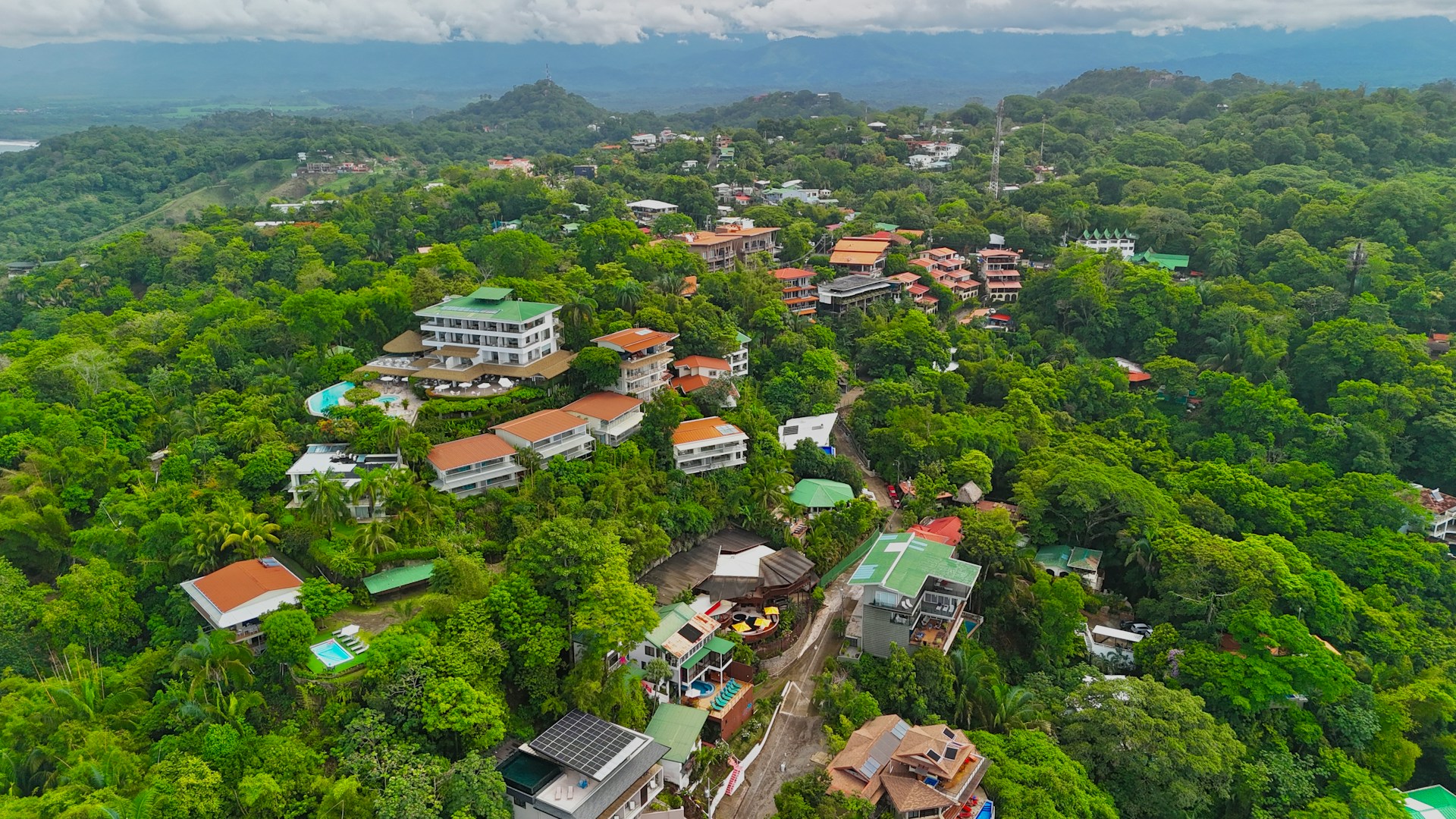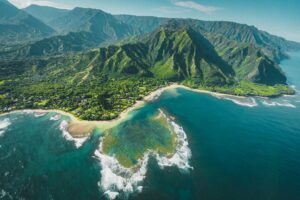Costa Rica is a land of biodiversity, pristine beaches, lush rainforests, and thrilling adventures. With its unique tropical climate and distinct weather patterns, deciding the best time to visit can depend on your interests.
Whether you’re chasing wildlife, looking for sunny beaches, or braving rainforest adventures, Costa Rica’s charm awaits all year round. Let’s dive into a detailed guide and see what are the best time to visit Costa Rica or plan your dream trip.
🌦️ Understanding Costa Rica’s Climate
Costa Rica has two primary seasons:
- Dry Season (December to April): Known as “summer” or verano, this period offers sunny days and minimal rain.
- Rainy Season (May to November): Known as “green season” or invierno, characterized by afternoon rain showers and lush landscapes.
Microclimates
Costa Rica’s diverse geography creates microclimates. Coastal areas like the Nicoya Peninsula may stay drier even during the rainy season, while higher-altitude regions like Monteverde receive more rain year-round.
🌸 Dry Season (December to April): Costa Rica’s Summer

Why Visit in the Dry Season?
- Perfect Beach Weather: Sunshine and clear skies dominate along the Pacific Coast, making it ideal for beach lovers in destinations like Tamarindo, Manuel Antonio, and the Guanacaste region.
- Adventure Opportunities: Dry conditions make roads accessible for exploring national parks and volcanoes like Arenal and Poás.
- Wildlife Watching: Spot sloths, monkeys, and vibrant bird species in national parks like Corcovado and Tortuguero.
- Festivals: Enjoy colorful events like the Palmares Festival (January) and the Santa Cruz Fiestas (early January).
Top Events
- New Year’s Celebrations: The country bursts with festivals, fireworks, and lively street parties.
- Semana Santa (Holy Week): Held in April, this religious holiday is marked by parades and traditions.
Travel Tips
- Book early, as this is Costa Rica’s busiest season, especially around Christmas and Easter.
- Coastal areas can be hot (up to 35°C or 95°F), so pack light, breathable clothing.
🌿 Rainy Season (May to November): The Green Season
Why Visit in the Rainy Season?
- Lush Green Landscapes: Rain revives Costa Rica’s greenery, offering a serene beauty in places like Monteverde Cloud Forest.
- Lower Costs: Hotels and flights are more affordable, with fewer tourists around.
- Surfing Paradise: The Pacific Coast (e.g., Dominical and Santa Teresa) offers incredible swells for advanced surfer, particularly in June and July.
- Turtle Nesting: Visit Tortuguero National Park between July and October to witness sea turtles nesting.
Special Highlights
- Wildlife Nesting: Sea turtles nest on the Caribbean Coast, particularly in Tortuguero National Park.
- September and October: These months are exceptions for sunny weather on the Caribbean side, including Puerto Viejo and Cahuita.
Travel Tips
- Expect afternoon rain showers—plan outdoor activities in the morning.
- Pack waterproof gear, including rain jackets and quick-drying clothes.
- A 4×4 vehicle is recommended for rural travel, especially to reach off-the-beaten-path destinations.
🌐 Weather Resources for Trip Planning
To monitor Costa Rica’s weather patterns, consider these reliable resources:
- Costa Rican Weather Institute: IMN Weather Updates
- AccuWeather Costa Rica: AccuWeather Forecasts
- Tide and Surf Reports: Magicseaweed Costa Rica for real-time surf conditions.
🗓️ Shoulder Seasons for the Best of Both Worlds
Traveling during the shoulder seasons—periods between peak and off-peak times—offers a harmonious blend of favorable weather, reduced crowds, and cost savings. In Costa Rica, these shoulder seasons typically occur in late November and early May, bridging the dry and rainy periods.
Advantages of Visiting Costa Rica During Shoulder Seasons
- Pleasant Weather: During late November and early May, Costa Rica experiences a mix of sunny days and occasional rain showers. This balance results in lush landscapes without the persistent rains of the wet season. Mornings are often clear, making it ideal for outdoor activities, while brief afternoon showers can provide a refreshing break.
- Reduced Crowds: These transitional periods attract fewer tourists compared to the peak dry season. Travelers can explore popular attractions, national parks, and beaches with more tranquility, avoiding the congestion typical of high season.
- Cost Savings: With decreased demand, many hotels, tour operators, and airlines offer discounts to entice visitors. Travelers can find more affordable accommodations and activities, making it a budget-friendly time to experience Costa Rica.
- Vibrant Natural Beauty: The intermittent rains during these months rejuvenate the flora, resulting in verdant rainforests and blooming flowers. This period is also excellent for wildlife observation, as animals are often more active in the refreshed environment.
- Optimal Conditions for Activities: The combination of moderate weather and fewer tourists enhances the experience of outdoor adventures such as surfing, hiking, and wildlife tours. For instance, the surf is particularly favorable during these times, attracting enthusiasts seeking quality waves without the crowds.
Considerations for Shoulder Season Travel
- Weather Variability: While generally pleasant, the weather can be unpredictable. It’s advisable to prepare for both sunshine and occasional rain by packing appropriate attire and planning activities accordingly.
- Availability of Services: Some tourist services may operate on reduced schedules during shoulder seasons. It’s recommended to confirm the availability of tours, transportation, and accommodations in advance to ensure a seamless experience.

🐾 Wildlife Watching: When to Spot Costa Rica’s Best
Costa Rica, known for its incredible biodiversity, is a paradise for wildlife enthusiasts. From majestic whales gliding through its waters to nesting sea turtles on pristine beaches, the country offers unforgettable wildlife encounters.
Whale Watching
Humpback whales, among the most impressive marine mammals, make Costa Rica’s Pacific Coast a prime destination for whale watching.
- Timing:
- January to March: Whales migrating from the Northern Hemisphere arrive in Costa Rica’s warm waters to breed and give birth.
- July to October: Whales from the Southern Hemisphere visit, creating another peak viewing period.
- Best Locations:
- Marino Ballena National Park: Located near Uvita, this park is famous for its annual Whale Festival and its whale tail-shaped sandbar.
- Osa Peninsula: A biodiverse hotspot where you can often spot humpbacks along with dolphins.
- Gulf of Papagayo: Known for its calm waters, this region offers excellent conditions for boat tours and whale spotting.
Sea Turtles
Costa Rica is one of the world’s most significant nesting sites for sea turtles, hosting several species throughout the year.
Green Turtles
- Season: Peak nesting occurs from July to August, primarily along the Caribbean Coast.
- Best Locations:
- Tortuguero National Park: This protected area is the most important nesting site for green turtles in the Western Hemisphere. Guided night tours during nesting season allow visitors to witness females laying eggs on the beach.
Olive Ridley Turtles
- Season: Their incredible arribadas (synchronized mass nesting events) take place from September to October.
- Best Locations:
- Ostional Wildlife Refuge: This is one of the few places in the world where arribadas occur. During these events, tens of thousands of turtles come ashore over a few days, offering a rare and breathtaking sight.
Other Iconic Wildlife
Sloths
- Found year-round in Costa Rica’s rainforests, sloths are easiest to spot during the dry season (December to April) when foliage is less dense. The Caribbean side, particularly Cahuita National Park and Tortuguero, offers excellent chances to see these laid-back creatures.
Scarlet Macaws
- These vibrant parrots are active year-round but are most easily seen in the early mornings. Manuel Antonio National Park and the Osa Peninsula are popular locations for spotting macaws in the wild.
Howler Monkeys and Capuchins
- These playful and vocal primates can be encountered throughout Costa Rica’s forests. Early mornings and late afternoons are the best times for sightings. Corcovado National Park and Monteverde Cloud Forest are particularly great spots.
Tips for Wildlife Watching in Costa Rica
- Plan Around Peak Seasons: Research the best times for the specific animals you want to see and plan your visit accordingly.
- Join Guided Tours: Local guides are experts at spotting animals and ensuring a respectful and sustainable experience.
- Pack Proper Gear: Binoculars, waterproof clothing, and comfortable hiking shoes will enhance your wildlife-watching experience.
- Respect Nature: Avoid touching or disturbing animals, maintain a safe distance, and follow park rules to ensure the conservation of Costa Rica’s wildlife.
With its rich ecosystems and carefully protected reserves, Costa Rica promises awe-inspiring wildlife encounters throughout the year. By timing your visit with the migration, nesting, or breeding patterns of its iconic species, you’ll gain a deeper appreciation for this remarkable country and its natural wonders.
🌏 Regional Weather Variations

Despite its small size, Costa Rica boasts an impressive array of microclimates, making it a destination where weather conditions can vary significantly depending on where you are.
Pacific Coast
- Dry Season (December to April):
This is the perfect time to visit if you’re dreaming of sunny skies, warm temperatures, and idyllic beach days. The dry season is characterized by consistently hot weather and minimal rainfall, making it ideal for lounging on golden sands, snorkeling, and exploring coastal towns like Tamarindo, Manuel Antonio, and Santa Teresa. - Green Season (May to November):
Afternoon rains transform the Pacific Coast into a lush, vibrant paradise. While mornings are typically sunny, the rains arrive later in the day, creating spectacular sunsets and rejuvenating the landscape. Surfers flock to the region during this time for excellent waves, particularly in areas like Nosara and Dominical. The green season also offers fewer crowds and more budget-friendly options.
Caribbean Coast
- Dry Spells (September and October):
Unlike the Pacific Coast, the Caribbean side of Costa Rica experiences its driest months during September and October. These months are ideal for visiting destinations like Puerto Viejo, Cahuita, and Tortuguero. Visitors can enjoy crystal-clear waters, pristine beaches, and wildlife-rich rainforests during this brief respite from the rain. - Rainy Most of the Year:
The Caribbean Coast is known for its consistent rainfall, even during the so-called “dry” season. However, this rain sustains the region’s incredible biodiversity, including lush jungles, vibrant coral reefs, and exotic wildlife. Short bursts of rain are typically followed by sunny intervals, so it’s still possible to enjoy outdoor activities like hiking and kayaking.
Central Valley and Highlands
- Cooler Temperatures Year-Round:
Thanks to its higher elevation, the Central Valley and surrounding highlands enjoy a temperate climate with cooler temperatures ranging from 15°C to 25°C (59°F to 77°F) year-round. This region provides a welcome break from the heat of the coasts. - Highlights:
The Central Valley is home to Costa Rica’s capital, San José, and is the perfect base for exploring nearby attractions. Visit the breathtaking Poás Volcano, tour world-famous coffee plantations, or wander through charming towns like Grecia and Sarchí, known for their artisan crafts. The highlands also offer excellent hiking opportunities in places like Monteverde Cloud Forest and Chirripó National Park, where the cooler weather is ideal for outdoor adventures.
Quick Tips for Travelers
- Packing: Bring layers and waterproof gear to accommodate varying weather conditions, especially if you plan to travel across different regions.
- Green Season Perks: The rainy season often means fewer crowds, lower prices, and incredibly lush landscapes—making it a great time to visit if you don’t mind a bit of rain.
- Wildlife Spotting: The wetter months are also prime time for spotting wildlife, as many species are more active during this period.
Costa Rica’s diverse climate ensures there’s something for everyone, whether you’re seeking sun-soaked beaches, misty mountain retreats, or vibrant tropical rainforests. No matter when or where you visit, the country’s natural beauty will leave you in awe.
🎉 Festivals and Events
Costa Rica is a country of vibrant traditions, lively celebrations, and community-centered events. Whether you’re visiting during the dry or rainy season, there’s always something exciting to experience that reflects the rich cultural heritage and diverse influences of the nation.
Dry Season Events
- Envision Festival (February): Held in Uvita, this renowned event blends music, art, and wellness in a stunning coastal setting. Visitors can enjoy yoga workshops, eco-education, live performances, and immersive art installations while connecting with nature.
- Santa Cruz Festival (January): A celebration of Guanacaste’s cowboy heritage, this festival highlights traditional Costa Rican culture with lively rodeos, folkloric dancing, parades, music, and plenty of local food and drink.
Rainy Season Events
- Limon Carnival (October): This vibrant Caribbean festival in Limón is one of the most colorful celebrations in Costa Rica. It features lively music, traditional dancing, stunning costumes, and a feast of local Afro-Caribbean cuisine. It’s a fantastic way to experience Costa Rica’s multicultural heritage.
- Independence Day (September 15): Costa Rica’s national holiday is celebrated with patriotic parades, traditional music, and children dressed in historical costumes. The festivities include the symbolic torch relay, fireworks, and the singing of the national anthem.
🌿 Top Activities by Season
Costa Rica’s year-round natural beauty offers unique experiences tailored to the season. Whether you’re visiting during the sunny dry season or the lush green season, you’ll find countless activities to make your trip unforgettable.

Dry Season Activities (December to April)
- Beach Relaxation:
Bask in the sun on Costa Rica’s stunning beaches. Top picks include:
- Playa Conchal: Known for its unique crushed-shell sand and calm turquoise waters, perfect for swimming or snorkeling.
- Dominical: A laid-back surf town offering a mix of strong waves for surfers and tranquil spots for beachgoers.
- Playa Conchal: Known for its unique crushed-shell sand and calm turquoise waters, perfect for swimming or snorkeling.
- Volcano Tours:
Explore Costa Rica’s iconic volcanoes while the weather is clear:
- Arenal Volcano: Take a guided hike around the base, enjoy breathtaking views, and relax in natural hot springs like Tabacón or Baldi.
- Rincón de la Vieja: A fascinating volcanic area offering geysers, mud pools, and waterfalls, ideal for hiking enthusiasts.
- Arenal Volcano: Take a guided hike around the base, enjoy breathtaking views, and relax in natural hot springs like Tabacón or Baldi.
- National Parks:
With dry trails and sunny skies, the dry season is ideal for visiting Costa Rica’s diverse national parks:
- Manuel Antonio National Park: Combine wildlife spotting (sloths, monkeys) with stunning beaches and short, accessible hiking trails.
- Rincón de la Vieja National Park: Discover unique volcanic landscapes, waterfalls, and opportunities for horseback riding or zip-lining.
- Manuel Antonio National Park: Combine wildlife spotting (sloths, monkeys) with stunning beaches and short, accessible hiking trails.
Green Season Activities (May to November)
- Rainforest Adventures:
Experience Costa Rica’s lush rainforests at their peak:
- Monteverde Cloud Forest Reserve: Take a canopy tour or suspension bridge walk through the misty treetops, rich with biodiversity.
- Corcovado National Park: Located on the Osa Peninsula, it’s a haven for wildlife lovers, with opportunities to spot tapirs, scarlet macaws, and even jaguars.
- Monteverde Cloud Forest Reserve: Take a canopy tour or suspension bridge walk through the misty treetops, rich with biodiversity.
- Turtle Watching:
Witness one of nature’s most extraordinary events during nesting season:
- Tortuguero National Park (July to October): Watch green sea turtles nesting on the beaches or hatchlings making their way to the ocean. Guided night tours are the best way to see this incredible phenomenon.
- Ostional Wildlife Refuge (August to December): Visit during an arribada (mass nesting event) of olive ridley turtles for a truly unforgettable experience.
- Tortuguero National Park (July to October): Watch green sea turtles nesting on the beaches or hatchlings making their way to the ocean. Guided night tours are the best way to see this incredible phenomenon.
- Whitewater Rafting:
Rainfall swells Costa Rica’s rivers, creating thrilling opportunities for adventure:
- Pacuare River: Famous for its Class III and IV rapids, the Pacuare offers adrenaline-pumping rafting through lush rainforest and dramatic gorges.
- Savegre River: Known for its gentler rapids, it’s a great option for beginners or families, with stunning scenery along the way.
- Pacuare River: Famous for its Class III and IV rapids, the Pacuare offers adrenaline-pumping rafting through lush rainforest and dramatic gorges.
Travel Tips
- Dry Season Perks: The dry season offers perfect weather for outdoor exploration, but it’s also peak tourist time. Book accommodations and tours in advance.
- Green Season Benefits: Rain showers are typically short and refreshing, leaving plenty of time to explore. Plus, you’ll enjoy fewer crowds and discounted rates on hotels and tours.
No matter the season, Costa Rica’s incredible biodiversity and outdoor activities promise unforgettable memories for every traveler.
🌎 Practical Tips for Your Costa Rica Trip

Packing Essentials
- Lightweight, breathable clothes, sunblock and sunglasses, swimwear for beaches for the dry season.
- Waterproof gear, including rain jackets, poncho, shoes and dry bags, for the green season.
- Insect repellent to protect against mosquitoes.
Transportation Advice
- Use shared shuttles or private transfers to navigate the country.
- Domestic flights are a quick way to reach remote areas like Osa Peninsula.
Budget Tips
- Visit during the green season for better deals on accommodations and activities.
- Explore free activities like hiking trails and public beaches.
🌴 Conclusion
Costa Rica’s beauty shines year-round, but the best time to visit depends on your priorities. For sunny beaches and accessible adventures, the dry season is unbeatable. If you’re drawn to lush landscapes, lower prices, and unique wildlife encounters, the green season holds its own charm.
No matter when you visit, Costa Rica’s natural wonders and pura vida spirit promise an unforgettable experience. Start planning, pack your bags, and let Costa Rica’s magic embrace you!
Also Read This:
- Costa Rica Itinerary 10 Days of Adventure and Relaxation in Paradise
- Best Time to Visit Rome: Unlocking the Eternal City’s Charms
- Best Time To Visit Hawaii | The Ultimate Guide You need
- Best Time to Visit Barcelona: Ultimate Guide to Exploring Spain’s Vibrant City
- Best Time to Visit Japan: A Detailed Seasonal Guide
- 30 Stunning Things to Do in Malta | The Ultimate Traveler’s Guide
- 37 Unforgettable Things to do in Prague Trip
- 13 Best Things to Do in Interlaken Switzerland | The Ultimate Guide
- Things To Do in Barcelona Bound: A Local’s Guide to the Best Things to Do
- 4 Day Barcelona Itinerary: Immerse Yourself in Culture and History
- Your Unforgettable Two Week Europe Itinerary




